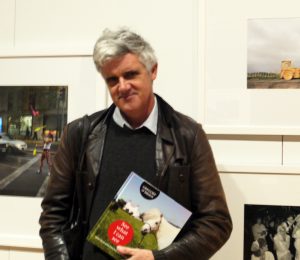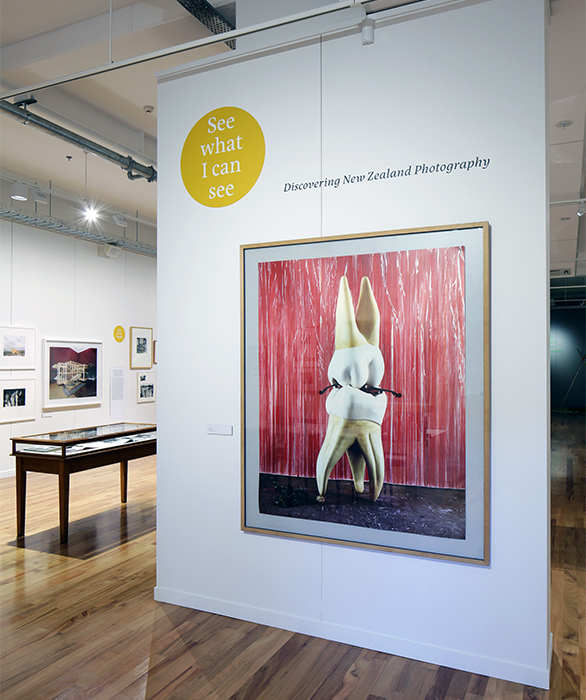Photography exhibition creates conversations
Boyd Webb’s Rhizome greets visitors to the Photography exhibition on at Sarjeant on the Quay until 06 November 2016
Photography exhibition creates conversations
A soggy ice cream cone flops down a step, perhaps it fell from the giant white hand in a neighbouring photograph. A labourer stands and stares – black and white above a modern colour print where a young waiter grins, posing at a jaunty angle. Perhaps the older man says, “Now look here young fella me lad, a job’s no laughing matter.” And the young man might reply, “All work and no play makes Jack a dull boy, grandpa.”
See what I can see: Discovering New Zealand Photography is about the power of the image and starting conversations – both between people and between the works in the show says Greg Donson who co-curated the show at the Sarjeant Gallery Te Whare O Rehua with author, Gregory O’Brien. The exhibition presents photographs from the Sarjeant Gallery’s collection and from selected sections of Mr O’Brien’s book See what I can see: New Zealand Photography for the young and curious.
The idea for the exhibition came about during a chat over coffee with Mr O’Brien just prior to the book going to print. “Ever since I came across the other books Greg produced for a younger audience I’d thought they would make terrifically engaging shows,” Mr Donson says. See what I can see was perfect in terms of timing, but also a number of the images that feature in the book are from our collection.”
The Gallery has an extensive range of photographic images that work well with the themes explored in the book and the exhibition provided a great opportunity to show them to the community.
“We are always looking for new ways we can include these works in our programming. It’s been wonderful seeing people respond to the images,” Mr Donson says.
For example while they were installing the exhibition a visitor spied the portrait of the artist Joanna Margaret Paul (1945-2003). “She was a friend of Joanna’s and it was so lovely seeing this woman have quite an emotional response to the image. I was reminded of the unique power photography has to make such an immediate impact on people.”

Gregory O’Brien, co-curator of the exhibition with his book See what I can see: New Zealand Photography for the young and curious.
Another visitor to the exhibition was the daughter of photographer Mark Lampe who operated Tesla Studios in Whanganui from 1908 to 1955. The photograph in the exhibition depicts the Majestic Theatre with a full house of children and their myriad expressions. “Lampe’s daughter remembered fondly that her parents had seats at the Majestic and would spend many Saturday evenings in the theatre, singing “God save the King” before screenings.”
Mr Donson said the broad scope of the book allowed them to include many different kinds of photographs, from historical to very contemporary images and at times quite eccentric works.
A large photograph of violins between two teeth excited discussion among a group of school children, who were at the gallery to study the act of looking. “They were so tuned in to noticing all the detail,” Sarjeant Gallery educator, Andrea Gardner said. “They got very focused on teeth and teeth pressing against each other, and were they going to wreck those violins. Then there was a bit of discussion about the sound of violins, that it can sound horrible, like gritting your teeth.”
Mr O’Brien who has curated many exhibitions says photography engages the emotions and speaks to the human condition. It’s about who we are and where we come from. It’s also about remembrance, full of grief and passing, and washes of nostalgia. “[Photography] has the ability to speak to the world we are in, to challenge it, reinvent it and to play with it.”
Helen Frances


